Sony RX10 – perfect for travel stock photography?
As I’ve probably mentioned before, my main camera kit is a Canon 5D Mk3, with the 24-105mm F4, 16-35mm F4 and 70-200mm F4 lenses. I also normally carry a 1.4x converter and 50mm F1.4 lens as well. All in all, quite a load on my back, but I like the flexibility that I can get with the lenses and the high quality of the results, even at higher ISOs and if I need to crop.
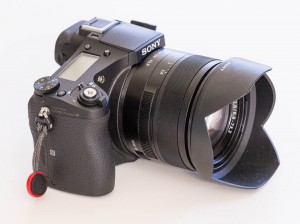
Firstly a bit of background to the camera. It is a fixed lens relatively small body – looks a lot like a small SLR and so that did seem to clash with one of my objectives – look more like a tourist! But it is small and unobtrusive and so I decided I could live with that. The photo here comparing it with my Canon and 24-105mm lens gives you a good idea of its size – but it is much much lighter than the Canon. The sensor is 1 inch across, which is not bad and provides 20 megapixels to give me room to crop. The zoom is particularly good – going from 24 – 200mm equivalent. It has a pretty good electronic viewfinder as I don’t think that holding a camera out to see the rear screen helps much with camera shake, and a range of manual controls so that you can pretty much control the shot you get. Finally, it has a small flash, which can be useful for a bit of fill when needed. As you can see from the little red tabs in the photo, I bought a Peak design camera strap system in December which I find great for hanging the camera over your shoulder and resting on your hip. I have the same tabs on my Canon as well.
It traveled around Equatorial Guinea for a week and I never got stopped by the police – well actually we got stopped at police checkpoints maybe 6 or 7 times, but our driver was able to explain where we were going and why! The camera worked perfectly, and I came back with several hundred shots. I learned how to use it pretty quickly – most things are intuitive and I had no problems moving from Canon to Sony. The only thing I still find difficult is that the manual zoom (there is an electronic switch as well) turns the opposite way to a Canon and hence I am always wanting to zoom the wrong way. But all the exposure controls are easy to master and the warning marks in the viewfinder if you are over-exposing were very helpful. I took some indoor shots with flash, some evening shots with long exposures, some shots in the rain as well as normally sunny images, and it coped with all.
Is it good enough for stock? I’m asking a lot from my camera here, because I can obviously downsize my images and upload them to microstock sites and hide any issues in the image, but I also submit to Alamy and Corbis and they want images that are around 5000 pixels wide – little chance to downsize at all. I can’t be bothered to maintain two versions and so the microstock sites get images that are generally 4500 pixels wide. I found that the noise was higher than my Canon – and that the auto ISO function didn’t actually use the lowest ISO available – there is a slightly better performance if you set the ISO to 80, but noise reduction got rid of any issues I saw with higher ISOs. I usually set the camera to aperture priority and watched what the shutter speed was set to – the auto ISO was helpful on cloudy days to keep that shutter speed in the hand-holding range. The camera has built in stabilization and so I didn’t have many problems with shake.
The zoom lens is generally sharp throughout its range, and any distortion or color aberration was removed by Lightroom without any issues. There is definitely a lower level of detail (compared to the full frame Canon) when you blow up to 100% – by no means an issue for submissions to the macro agencies at full size, but it can be seen in a photo of tiny windows on a modern building for instance. The next two images are 100% crops (if you click on the image) of the center and lower right of the Mongomo cathedral in Equatorial Guinea – ISO 125, 1/800th second at f8. I don’t apply sharpening in Lightroom apart from the default.
So, what is the bottom line? Yes – I like it! I now carry all my Canon stuff and this new camera when I go on a trip, but I often just stroll around the streets with the Sony and keep my Canon for the more planned excursions (usually in a rental car with tripod etc.) when I am trying to get the really great shots. But, to be honest, I would be quite comfortable taking the Sony as my sole camera on some shorter trips and have had no issues with rejections of the resultant images at either Shutterstock or Alamy.
If you are interested in purchasing it, please use the link below – it all helps!

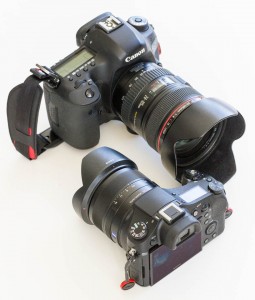
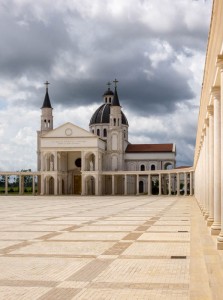
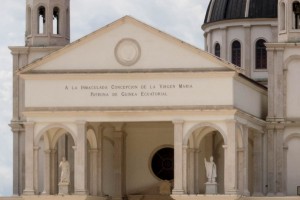
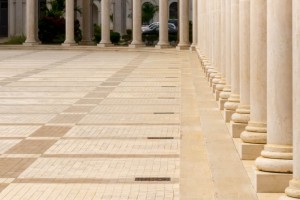






Hi Steve,
Thank you for your sharing, I am looking for a walk-around small DSLR too so this article help me much. Thank you.
Are all the photo you posted are taken without tripod? If No then what the tripod you’ve used to lets local people though you was a tourist not a pro?
Thank you,
Steven
Hi Steven
I do have a tripod plate for this Sony, but I don’t think I have ever used it. I do use the tripod more with my Canon – usually for night shots or interior shots where I won’t be in the way. But the Sony is my main walk about camera – I may miss some more difficult exposures, but I always try to remember that I am on vacation!
I use a Gitzo carbon fiber tripod – a small thin one if I am flying and have to carry a small amount of luggage, and a larger one if I am driving around more and the car can take the strain.
Steve
Hi Steve
Just discovered your interesting sites today and enjoy reading your thoughts on the stock photography industry.
I notice you state the sensor in the RX10 is one inch across. The crazy naming convention for camera sensors strikes again. The one-inch sensor is actually only 13.2 x 8.8 mm
Regards
Frank
Perhaps it is one inch diagonal! I’d never really bothered to check in detail. It is known as a 1 inch sensor though although you are right about its dimensions.